Living in a tiny electric van for three years
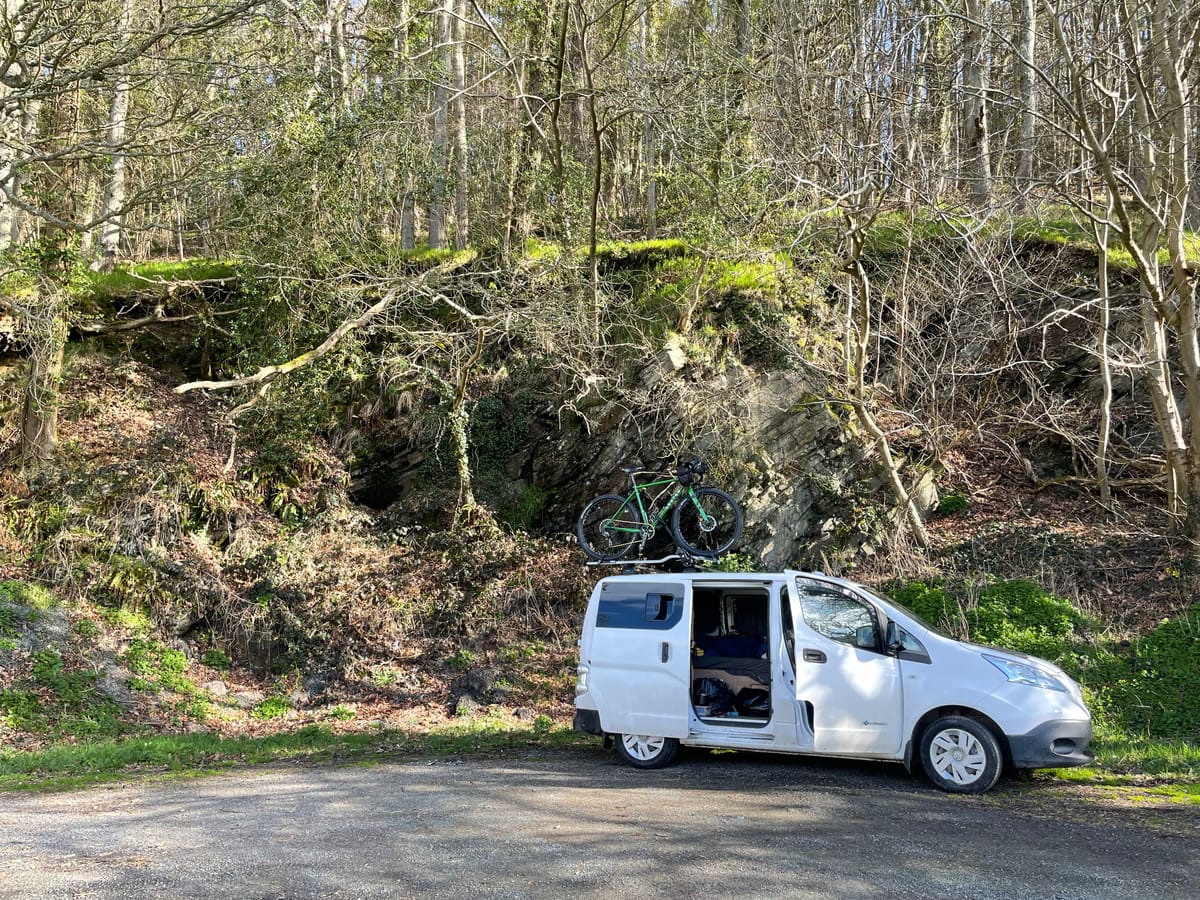
In October 2022 I bought a small electric van, a Nissan E-NV200, that became affectionately known as the Struggle Bus.
Getting a campervan was an upgrade from living entirely on a bicycle for a few years, which was a life changing experience. I was free-range hauling ass around Europe for years, going wherever the wind took me, but nothing lasts forever. Founding a reforestation charity meant I needed to get around the country with enough spades to cover 50-100 tree planting volunteers, or enough chainsaws and machetes to remove invasive species that on a bike would get me extremely arrested.
The Struggle Bus solved a lot of my problems (I had a few horrendous injuries) and problems for the charity (we were renting a lot of polluting diesel vans). It mainly helped me continue living 100% fossil fuel free for years.
With all the injuries, a few bouts of COVID, and the pace of work needed for the charity, I probably would have died without the Struggle Bus. On the other hand, it definitely tried to kill me a few times.
I'd like to share some of the good, the bad, and the things I should have done differently, in case you are also stuck waiting for boomers to shuffle off this mortal housing market (around 2034) before you can ever afford an actual house. Maybe it will help you decide to pick an electric van instead of kicking the planet in the face for your "off-grid" lifestyle.
The Van
If you would like to get really stuck into the setup of this van check out Introducing the Struggle Bus.
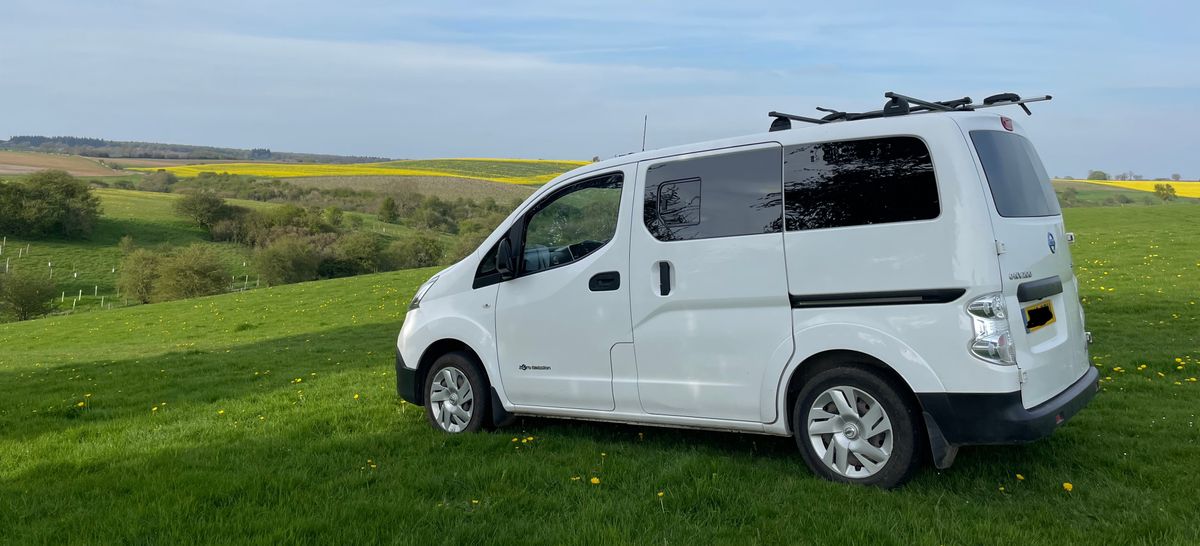
Basically it was a standard Nissan E-NV200 (2018), which is a Nissan Leaf electric platform shoved into the popular Nissan "plumber van" NV200 shell. It's 2014 technology, with a larger battery added for the 2018 model, so it's as basic as they come. It's a small lad compared to any other van.
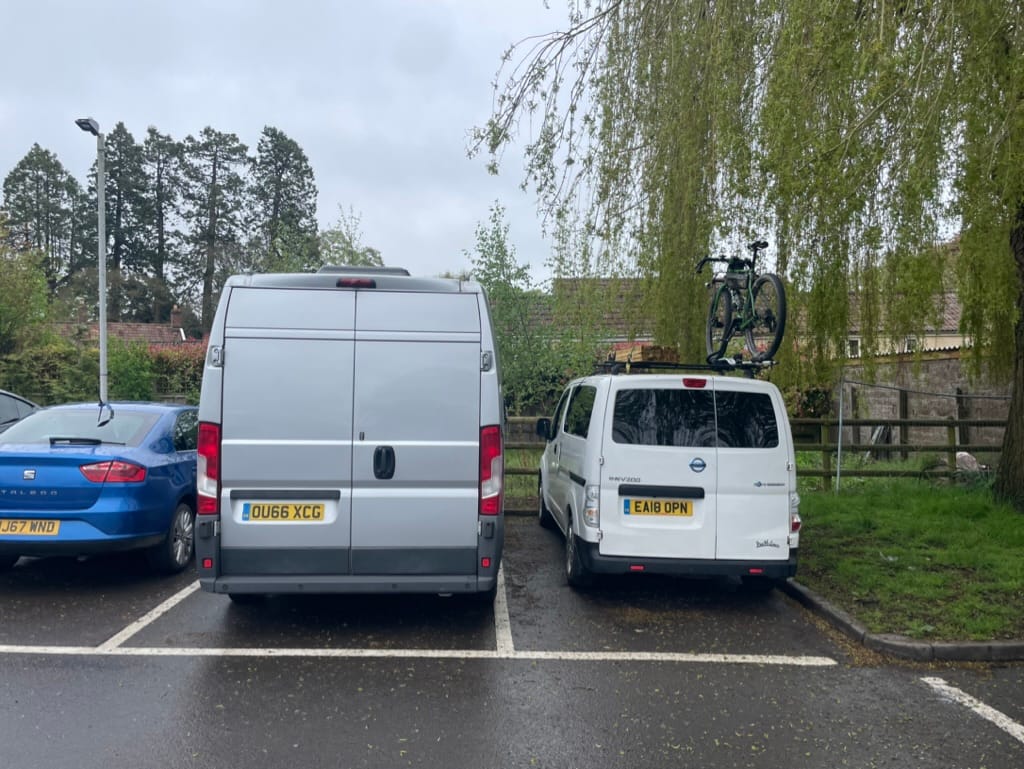
The range was initially about 120mi, down to 100mi once I'd shoved it full of a bed and everything I owned, along with winter tyres for grip on forest tracks, and a pop top roof making it as aerodynamic as the average garden shed.
Literally any electric van you buy now will be bigger, cheaper, go further, charge faster, but that was what I could afford late 2022. To be entirely honest I never had trouble with the electricness of it. People who complain about electric vehicles have 99% of the time never driven one, and it shows in their arguments.
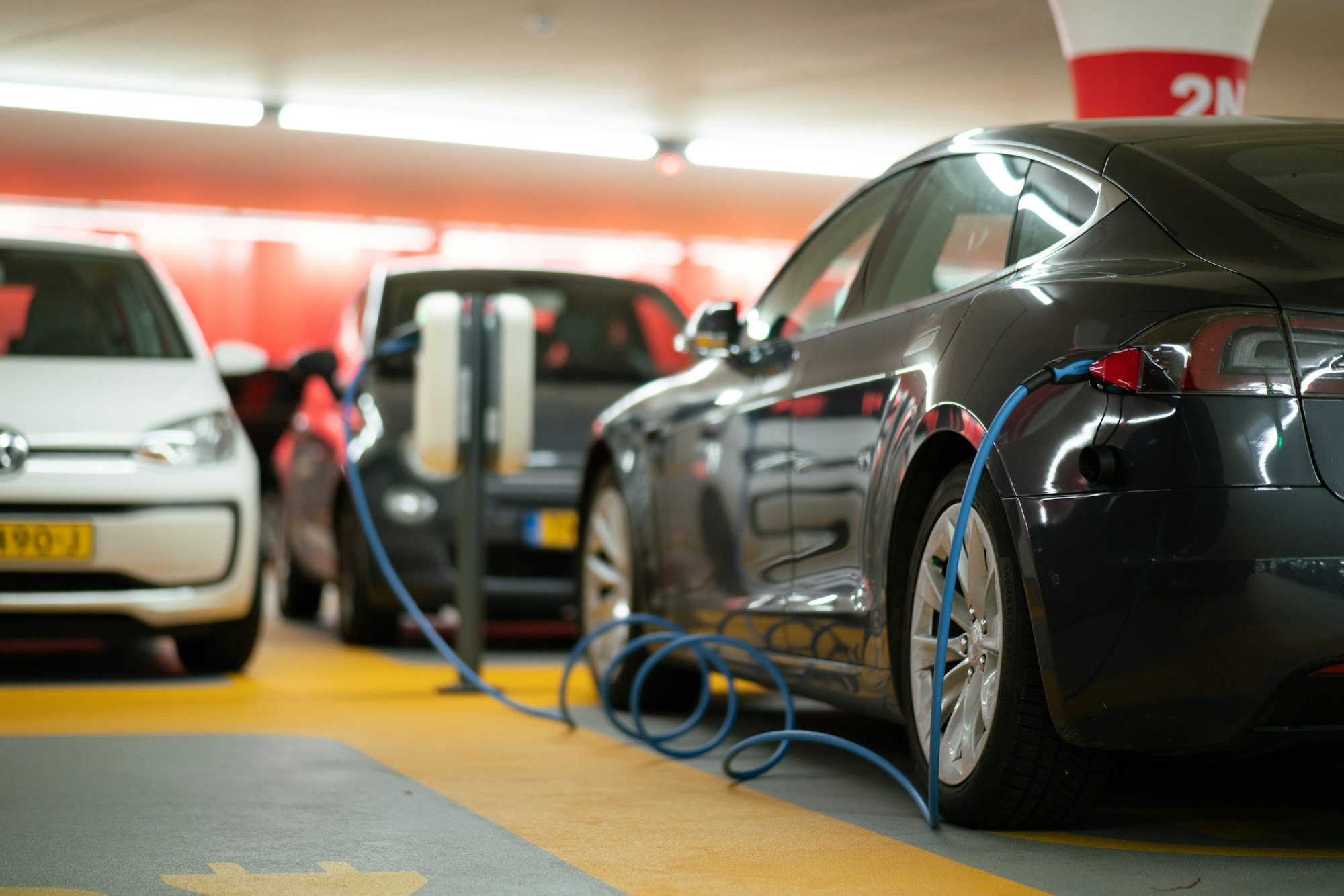
The day I bought it I threw some of my bikepacking gear in the back and went to collect a van full of used plastic tree guards, which made a fine bed.

Since then I bought cheap ass furniture off eBay and eventually drilled down a few things and trucker hitched the shelving to the wall with spare old rope.

This is not a story of the worlds fanciest conversion. You can find plenty of fancy trust fund influencers doing that on YouTube.
This is a story of bollocking about with zero money, because whether you had money and gave it all up to a reforestation charity, or you never had any money because the world is a fucking state now, we're all wondering what we can do on a tight budget without kicking the planet in the face.
Stuff that was amazing from day one
Solar, inverter, batteries, and 12v sockets everywhere meant I could charge laptops, phones, and anything else, meaning more work could be done from random benches in summer.
It also meant I could charge my chainsaw/brushcutter all the time wherever I was and whatever was going on. No more driving off to pick up fossil fuels for a chainsaw, I could just charge them in the van. In winter, when the work is done, these things kick out some heat, which is amazing.
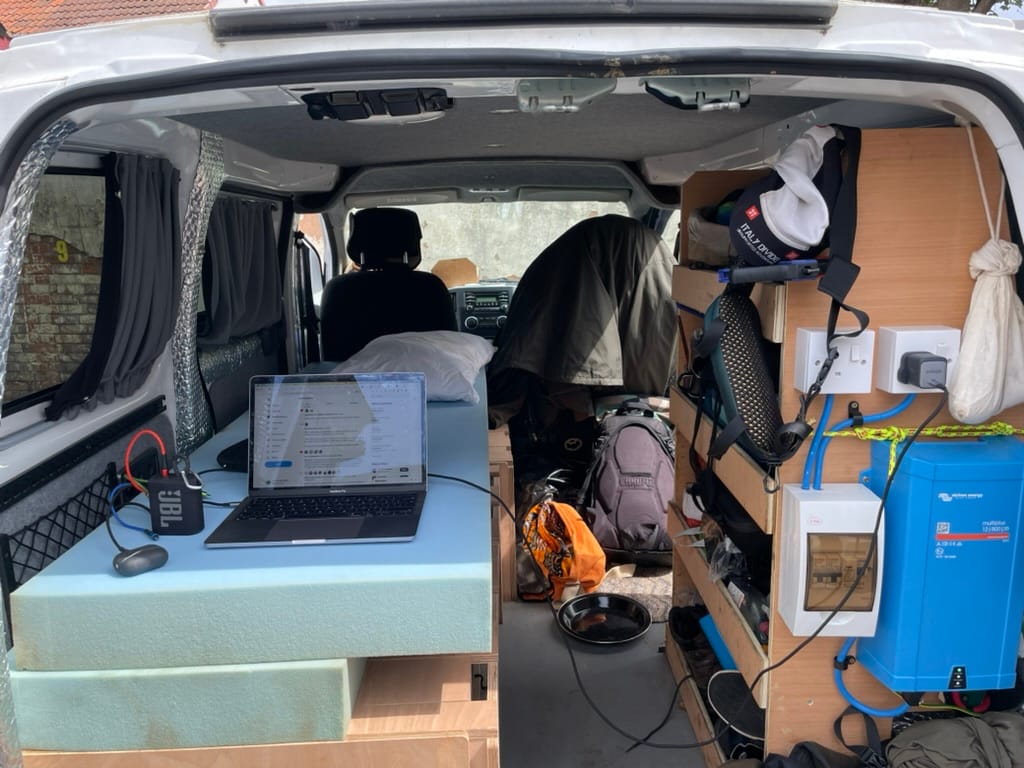
I stuck a cheap flatpack bed in there and it has been comfy and great. Space undernearth for loads of kit. I stuck a cheap shelf kit in there for no money and it solved all my storage problems.
Having a bed in the back answers the frequent "What do you do whilst you're waiting for it to charge" question from people that know nothing about EVs. Either it's a quick charge and you've barely finished eating/pooping, or its a slower charge and you snuggle your partner for a bit.
I popped in an induction hob (Vango Sizzle), and a metal kettle, so my partner could make tea aaaaall the time easily. We never had to give Costa a single penny.
Carrying axes, machetes, etc. is illegal only when you're on a bike or train, but stick them in a car and thats fuckin' fine for some reason. Carbrain cops. Whatever. I could do my job and haul all loads of stuff around the place easily.
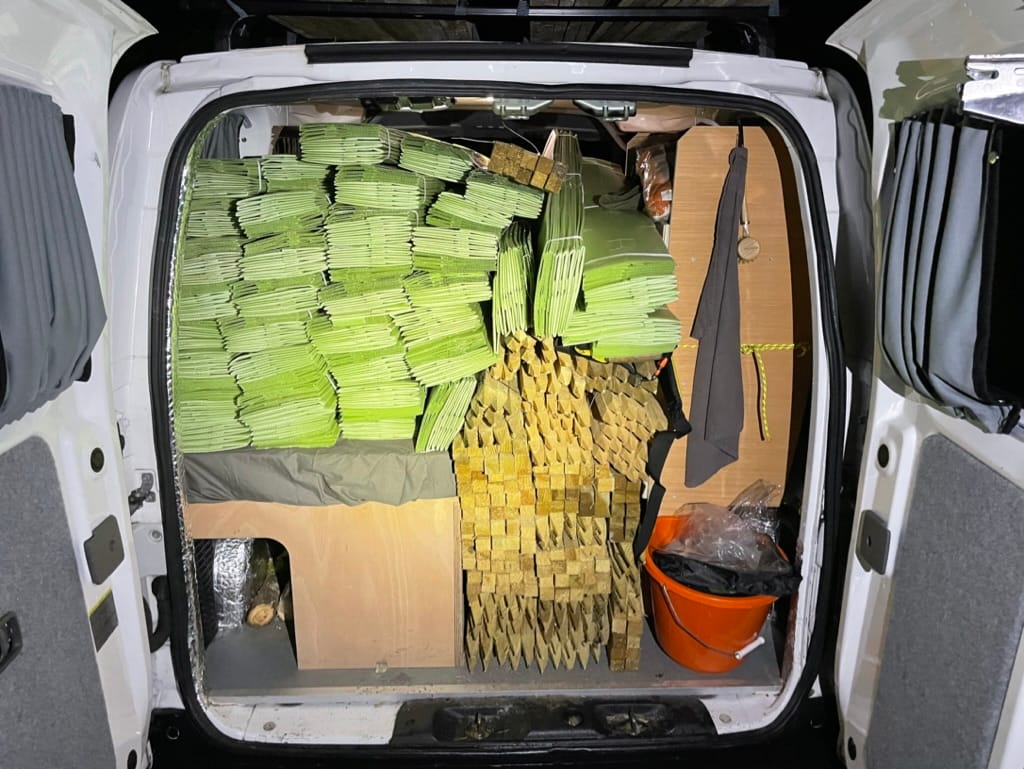
To speak to the electricness of the van, charging in the middle of nowhere at whatever farm I was working/sleeping at was a huge win. I have never been offered a free jerry can of petrol from any farmer, but they were always happy for me to plug me into the barn whilst I worked and that kept me rolling around the most remote parts of the country for free for years.
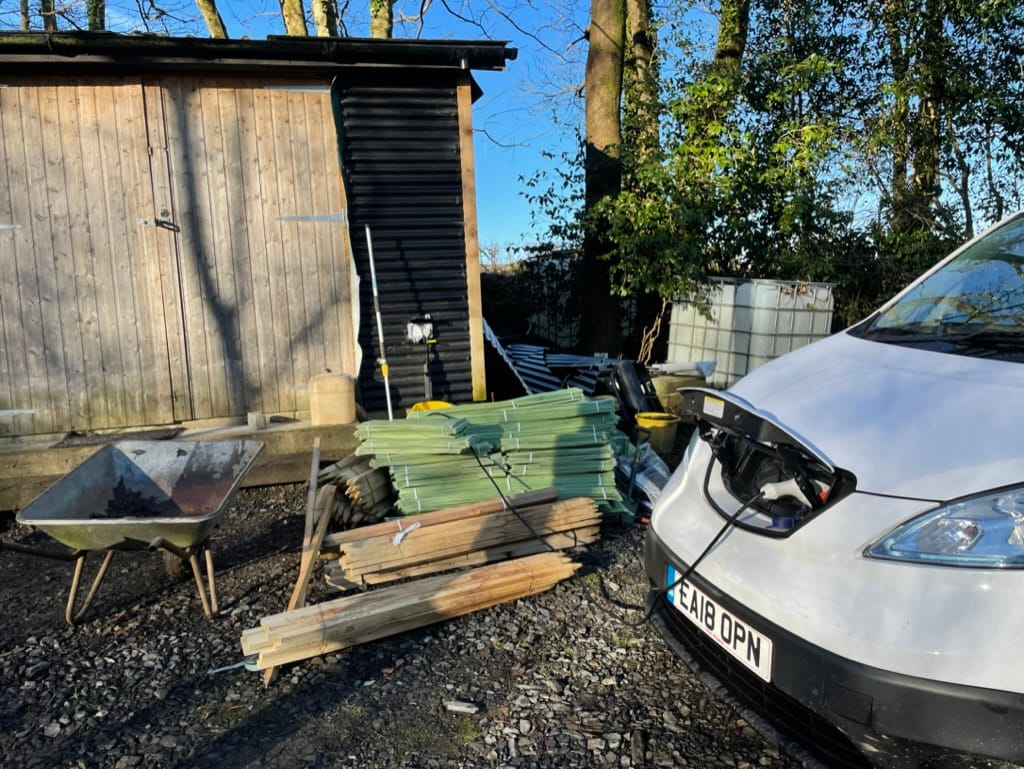
Free charging at the gym. Free charging at most farms. I drove this van across Netherlands and Germany down the Black Forest and never had a rough time charging, I even got a free charge directly off a wind turbine one time.
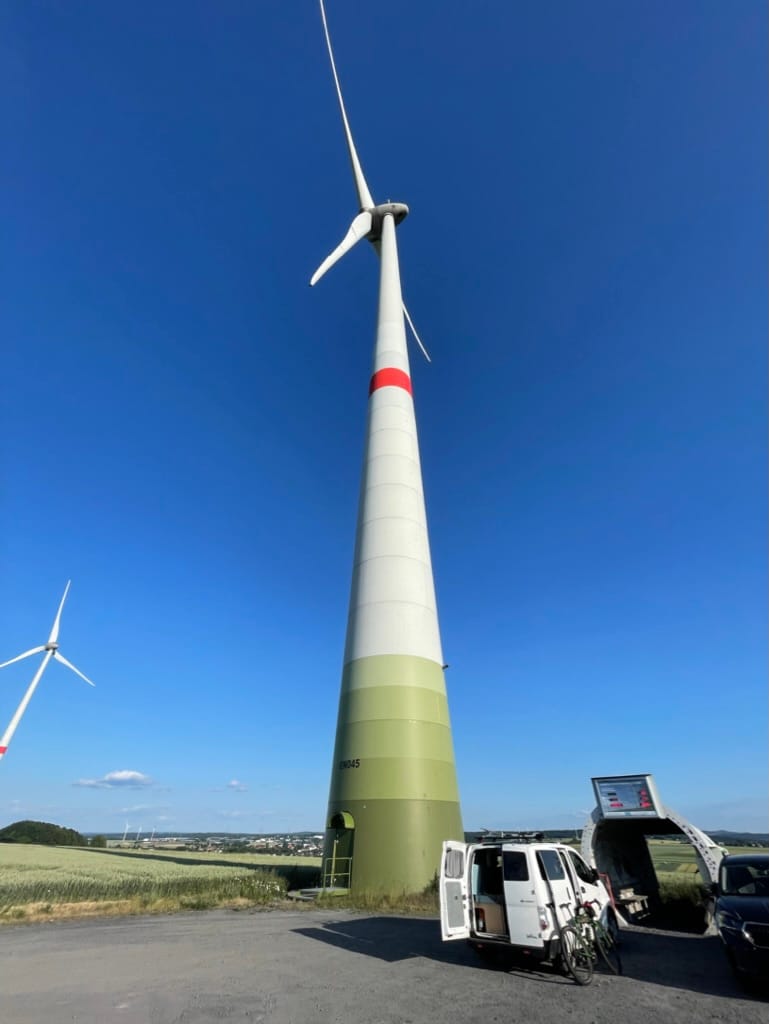
Stuff that needed some fixing
Ventilation is incredibly important, so from day one even when I first got into the entirely unconverted panel van with a bivy bag on the floor, I always kept a window open at night. The first upgrade was to add rain guards for the front windows, so they could be open even in wet and windy conditions.
People exhale one pint of water a night in breath!! That would generally end up dumped onto the windscreen making a bit of a mess that needed vinegar and lemon to remove. Worse is that it will end up in the bedding and any other soft furnishing (even in summer on warm nights). After a few days the duvet and pillows all feel a bit damp and need to be dried somehow: much easier in summer than in winter.
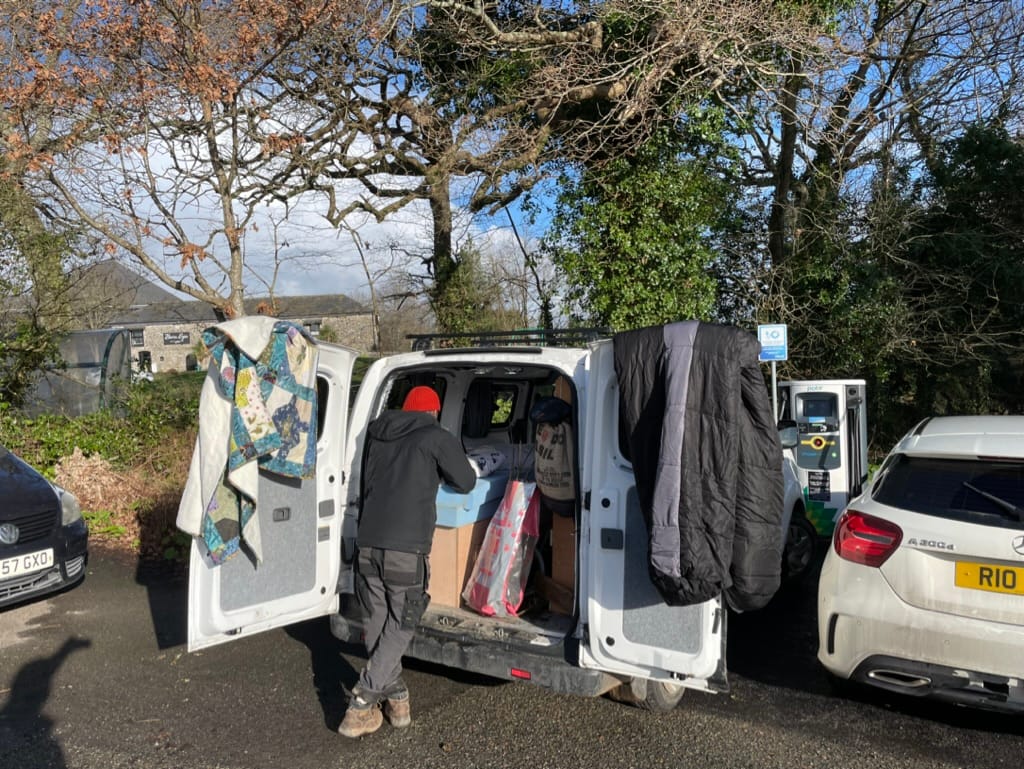
Insulation was shit. The guy I hired to do the initial work only did cavity insulation, and completely ignored a whole lot of bare metal. Any bare metal in the van would mean "thermal bridging". Basically, the metal is getting cold on the outside, and if you only do cavity insulation then the cold will work its way through the metal and pulse out through any uninsulated metal on the inside. i could literally feel cold coming off the metal in waves against my face in winter. I stuck some Thermawrap on most of the metal inside which helped a lot.
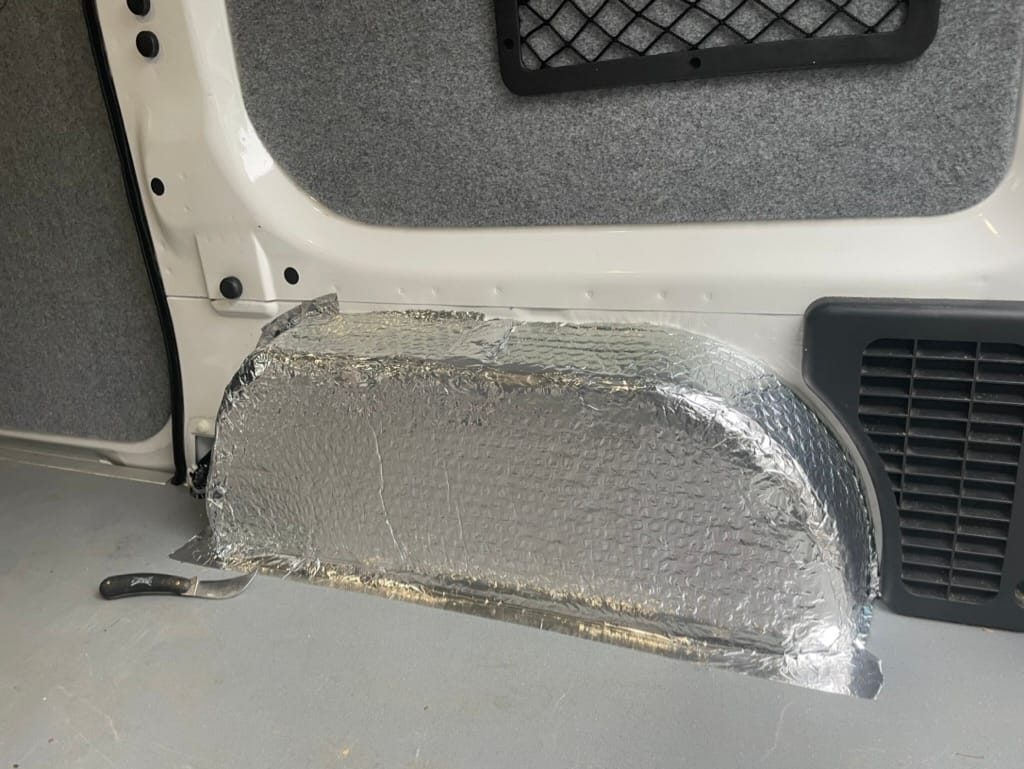
Eventually I got that properly redone. They put carpet over every bit of metal including top, sides, doors, everywhere seriously helped. I asked for this in the first place but the guy decided I didn't need it. Demand this from whoever works on your van and refuse to pay them if they leave a single inch of metal uncovered.
Another huge issue for me was the went from cycling hunfreds of miles a week to rarely ever cycling. At first it was because I was never with my bike. Having a bike in the van was muddy and painfully jabbed in the ribs. I got a roof rack for my bike, but having a bike on the roof lead to serious damage when I had to dodging a dog in a car park and rammed it off a building. Downtube mangled. Welder required.
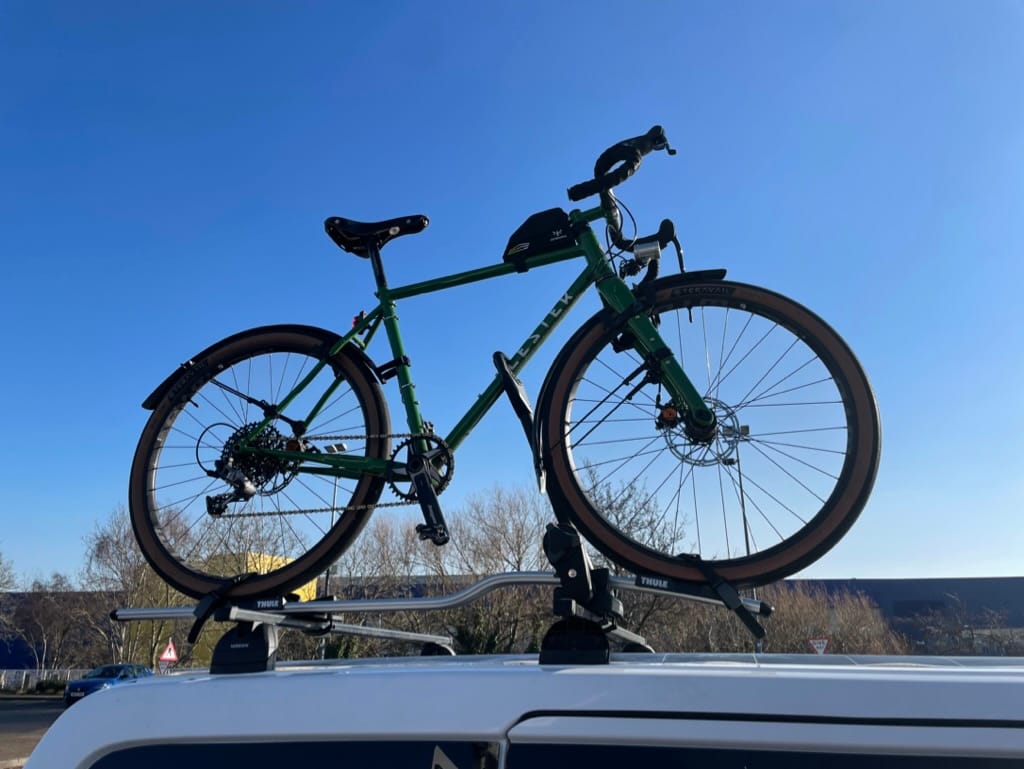
Bike on the back has worked out nicely. Having a trash bike always on the back there meant I could always deploy it to fetch things without always using the hammer to crack a nut and wasting mileage. Sometimes I took the fun-mobiel out for a bollocks on the side.
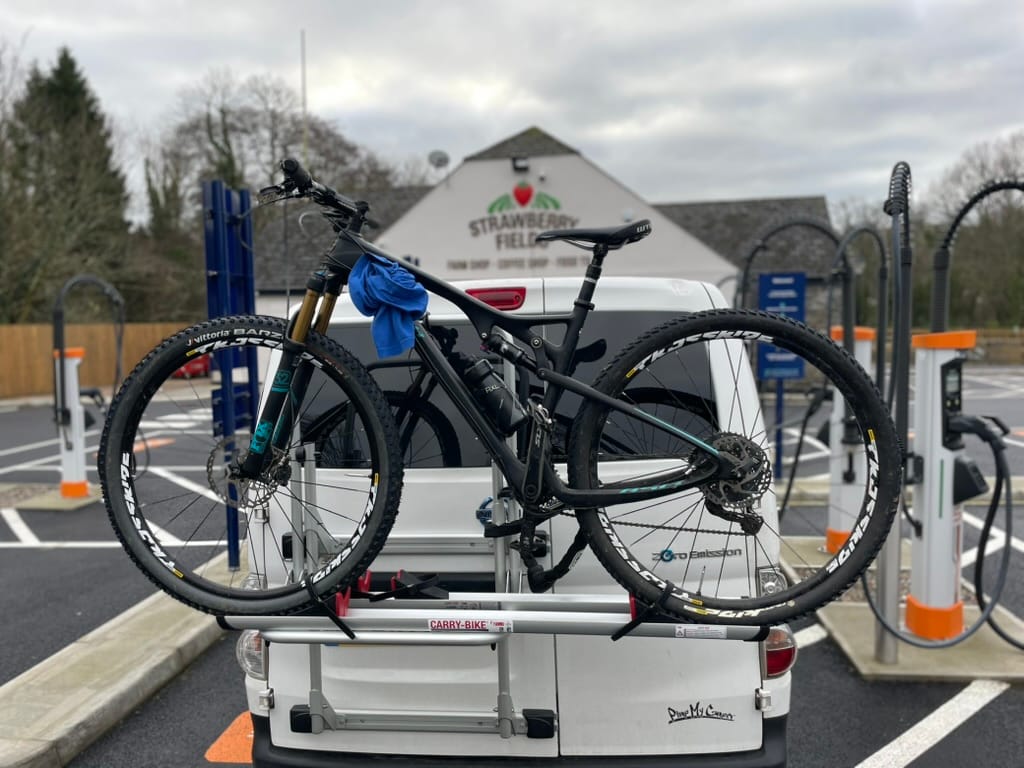
Moisture got really bad because all i had was two small windows. I really ever wanted to open them because all times of years there were issues. In summer there would be a lot of bugs, and in winter there would be a lot of wet and cold.
Moisture buildup lead to some of my biggest issues, giving me pnumonia two years in a row (four months one year, one month the next year). The moisture lead to mould in roof and the floor, but it was exaserbated by the roof and the floorbeing badly installed. The roof had a leak from poor sealing on the housing for the solar panel wire coming into the van, and the foor was a shiteshow due to being raised without sealing at the back and sides. I knew it was bad when the arsehole did it, but I did not imagine it would almost kill me as much as it did.
The floor was fixed with an underfloor heating upgrade. It sounds so fancy but it was cheap and good. £500 meant I no longer had an issue opening the windows, and £1k replacing the roof with a pop top roof meant it was absolutely fine to have the roof open even in winter because the underfloor heating was replacing the heat that was being lost. Warm air carries more moisture, and because warm air moves up it would literally take all the moisture up to the pop top roof which had vents in the side, and when parked in cross wind it would take the moisture away. The winter after I got that work done I had zero pnumonia.
The lack of any way to shower sucked, but I got a gym membership that had places all over the country. It helping me excercise more, and the ability to shower before getting into bed meant I lost a fair bit of weight that I gained since getting the van. Fitting in a swim whenever clients were blocking me is much easier than trying to fit a swim into whenever the swimming pool lets you on whatever random shit schedule is happening wherever you are right now.
Stuff that I have not yet improved
Nowhere to sit and work is the major issue of this van. Sure the gym had a work area and they would feed and water me, but I need to improve the situation in the van so I'm compfortably doing work on the road.
This can be broken down into three major changes.
Firstly, I want to switch from my long side bed to a "rock and roll bed", which would open up a lot of space in the van for moving loads of stuff around and also help me legally drive volunteers about with the extra two seats.

Secondly, it would give me the chance to use the side space for a kitchenette. A sink, a slide out hob, all of which would let me cook meals and run a kettle for a cup of tea whilst I'm sat in the back seat, increasing my chances of not giving Costa any bloody money at all.
Finally, this opens up the chance for a screw in desk. When it's winter and it's pissing down outside, the last thing I want to do is have my laptop resting on the steering wheel, where I end up blasting the horn if I hit the enter key too entusiastically.
Switching from a long side bed to a rock and roll bed, with a kitchenette and work desk, solves literally every issue I have with the van. It's fairly fundamental, and means far less storage, but I think over time I wanted to store less stuff long term, and make it more useful in general.
So would you switch to an electric campervan? Three years ago it cost me £18,000 to get a very second hand unconverted.small electric van, but these days you can get a second hand Ford E-Transit (big van) for £16,000.
If you are considering a campervan I need to ask: what are you getting out of a diesel van?
If you want big, you can now get big.
If you want cheap, charging is cheaper than refueling.
If you want simple, electric vehicles have fewer moving parts and cost a lot less to maintain.
You do not need a diesel van.
Try an electric. It's been a blast.


Comments ()